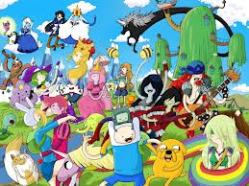With all the shiny bright colors now available, thanks to the rise of LCD and plasma technology, kids are now overexposed to audio-visual stimulants. TV shows and video games, in order to keep up with the new needs of youngsters, have adapted their products to be suitable for a more and more hyperactive generation.
 Stuck between boredom at school and overwhelming brain excitement at home, kids must still manage to concentrate on what the teacher in front of them is desperately trying to get into their head. Prescribing Ritalin to every child may not be the social choice to make to get children to pay attention in class. Sometimes, all it requires is some creativity and adaptation. How can teachers get their students to listen? I suggest giving them what they want!
Stuck between boredom at school and overwhelming brain excitement at home, kids must still manage to concentrate on what the teacher in front of them is desperately trying to get into their head. Prescribing Ritalin to every child may not be the social choice to make to get children to pay attention in class. Sometimes, all it requires is some creativity and adaptation. How can teachers get their students to listen? I suggest giving them what they want!
A good way to keep children’s interest is to show them videos that are short and sweet. This is where YouTube becomes your best friend. This handy tool is an amazing data base with a wide range of videos to choose from that can suit every teaching situation. English teachers are particularly pampered since they may pick almost anything on the web and turn it into teaching material: “As English teachers, sky is the limit” (Miller, 2014). Want to enrich students’ space vocabulary? Have them watch a documentary on Mars. Want to teach the difference between two verb tenses? Have your students listen to a song switching between the two tenses.
 Ideally, length of the videos should not go beyond twenty minutes. Passed that point, you will have lost almost everyone’s attention. Even better, try to show them many two-to-five-minute videos on the same subject instead of one long, this will reignite their interest. Plus, if you want to have time to explain the subject and do exercises, you should consider keeping spare time to do so.
Ideally, length of the videos should not go beyond twenty minutes. Passed that point, you will have lost almost everyone’s attention. Even better, try to show them many two-to-five-minute videos on the same subject instead of one long, this will reignite their interest. Plus, if you want to have time to explain the subject and do exercises, you should consider keeping spare time to do so.
A side of YouTube that is not well-known by the public is its education section. Once on the website, you will find six suggested categories of videos on the left banner. They are: popular videos, music, sports, video games, education, and movies. The education section is subdivided into nine subsections: Primary & Secondary education, University, Lifelong Learning, Social Sciences, Mathematics, Engineering, Science, History, and Arts. Throughout these subsections you may find crash courses, documentaries, conferences, lectures, etc. Most of this content would not be appropriate for viewing in class, but may inspire you for your next lesson.
To conclude, try making students feel like they are having fun, even if that is not really the case. As long as they believe your classes are a bit entertaining, they may put some effort into it. They may even show up more often in class.
